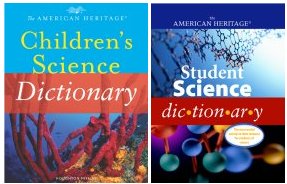Sky Dust Keeps Falling on Your Head Additional Information
NASA’s Stardust mission:
Additional information can be found at Don Brownlee’s Web page at http://www.astro.washington.edu/brownlee/.
You can learn more about the Skydust (National Aeolian Detritus) Project at http://www.skydust.org/.
Stratospheric dust:
http://curator.jsc.nasa.gov/curator/dust/dust.htm
NASA Johnson Space Center
Cosmic dust and its evolution:
http://www.tass-survey.org/richmond/answers/dust.html
Amara Graps, Max Planck Institute
Interplanetary dust:
http://www.uark.edu/campus-resources/metsoc/idp.htm
P.H. Benoit, Meteoritical Society
2003 Perseid meteor shower (peaks on Aug. 13):
http://science.msfc.nasa.gov/headlines/y2003/17jul_perseids2003.htm
NASA Marshall Space Flight Center
2002 Leonid meteor shower (lesson plans and activities):
http://www.thursdaysclassroom.com/09nov01/corner.html
NASA
![[book]](https://www.sciencenewsforstudents.org/wp-content/uploads/2019/11/a124_b1697.jpg) |
Meteors, Meteorites, and Meteoroids — Ray Spangenburg and Kit Moser
Published by Franklin Watts/Scholastic, 2002
Do you know the difference between a meteor, a meteorite, and a meteoroid? Explore the world of fascinating “space rocks.” Learn about the life story of a meteor, read stories and legends about falling meteorites, and discover where meteors come from. Craters, meteor showers, the extinction of the dinosaurs, and the different types of meteorites are all discussed in this book, which includes full-color photographs and illustrations. The book also includes a timeline of meteor discoveries and a glossary. |
Power Words
asteroid: Any of numerous small, often irregularly shaped bodies that orbit the sun. Asteroids range from several hundred miles in diameter to the size of a speck of dust.
comet: A celestial object that orbits the sun along an elongated path. When close to the sun, a comet has a head made up of a gaseous coma surrounding a solid nucleus of ice, frozen gases, and dust. A long, bright stream of gas and dust forms the tail of a comet.
cosmic: Relating to the universe or the objects in it.
detritus: Loose fragments, such as sand or gravel, that have been worn away from rock.
meteor: 1. A bright trail or streak of light that appears in the night sky when a meteoroid hits Earth’s atmosphere. The friction with air causes the rock to glow with heat. 2. A rocky body that produces such light. Most meteors burn up before reaching Earth’s surface. A meteor shower occurs when a large number of meteors appear together and seem to come from the same area in the sky.
meteorite: A meteor that reaches Earth’s surface without completely burning up due to friction.
meteoroid: A rocky celestial body that travels through interplanetary space in an orbit that crosses Earth’s orbit.
pollen: Powdery grains that contain the male reproductive cells of most plants. In flowering plants, pollen is produced by the anthers of stamens.
translucent: Transmitting light, but not clearly enough to be transparent. A translucent object causes enough diffusion of light that an object or image on the other side can only be seen indistinctly. Frosted glass is translucent.

Copyright © 2002, 2003 Houghton-Mifflin Company. All rights reserved. Used with permission.